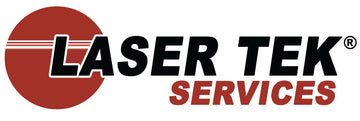The debate on the preference between in-house printing and outsourcing continues. Even with the entry of technically aligned high-level printers that could benefit in-house printing a lot. Both the pros and the cons have aired conflicting ideas on the merits of both. Even religious organizations and church printing needs had not escaped scrutiny by both lines of thoughts. Let us take a look at what church documents need to be printed and decide.
During special celebrations we see around colorful church banners that are usually preceded with bulletins. Religious feasts often have church postcards sent to members of the congregation. Church business cards and brochures promote the importance of the church. Of course church donation and remittance envelopes are a must for the continued existence. Aside from a weekly or bi-monthly newsletter, religious organizations share flyers and handouts. Still, there are lots of activities that need printed materials.
Outsourcing versus in-house document printing: In the recent past, outsourced printed documents look better compared to in-house printed materials. However, with the entry of high-end laser printers, the playing field has become about even. Particularly in monochromatic (black and white) printing where laser printers are found better. The appeal has lost its importance and preference is now gauged in terms of (1) convenience, (2) print results, (3) cost parameters, (4) flexibility (5) turn-around time of documents, (6) consumables, (7) and support.
- Convenience: Organizations sorely lack personnel and staffing-up is not an option because of the limited budget. Time is really important. In-house printing of documents is not only practical, but convenient. Going out placing the order, conferring with graphic artists on the design and proofreading the final cut is quite a burden if not time consuming. Outsourcing of documents has lost its edge.

- Printing results: When documents are outsourced, the type of printer used is not important to the client. For in house printing the device is the heart of it all. The development of laser printers has reached a point where output is even better than a print shop printed documents. And with each manufacturer vying for a sizeable share in the sales market, printers have really gone down in cost. This happens to be just a business strategy. A part of the razor and blade mentality, allowing printer manufacturers to profit, mostly on consumables while giving away the printers almost free to end-users.

- Cost parameters: It is a known fact that outsourcing document printing will cost a lot. Second, orders have minimum number of copies, or the document will be more expensive. Third, the Church, for instance, will have to order 20% more of the document to be safe should additional copies be needed. Out of this desire to have enough copies, increases the risk of too much waste. In house printing on the other hand, allows the user to print what is necessary. This limits printing costs significantly.
- Flexibility: This is not applicable for outsourced documents. The order is fixed and time for delivery is not predictable. In-house printing is different. Documents can be revised even during printing runs. The number of documents to be printed is dependent on the need, overprinting is unnecessary.
- Turn-around time: Outsourced printed documents are never delivered on-time. Thus, it is best that orders should be made a couple of weeks ahead of schedule. In-house printing is fast. Particularly when using laser printers, output delivery time falls at 50ppm (pages per minute), some printers even manage up to 100ppm. A company brochure, for instance, can be printed while the client is waiting. There is really no need to stock-up on documents.
- Consumables: This is where outsourcing fares well. Clients need not worry about how the documents are printed. Their only concern is how the document looks and completion time. In-house printing is all about consumables and these items are not cheap. However, compatible consumables are available in the market that lowers printing costs even more. Consumables do not only refer to compatible toner cartridges, but OPC Drums, fuser assembly and some other printer parts as well.
- Support: This is not the concern of clients with outsourced printed documents. Any machine breakdown is the print shops’ problem. Not within-house printing because a printer malfunction affects the output. However, printer manufacturers never leave buyers orphaned. Support groups are on stand-by to help users in the event of any emergency.
One thing that may hound in-house printing is the disposal of consumable waste. Toner cartridges for instance, are not classified as domestic waste, so it cannot be dumped into regular trash bins. They have special dumping places or some collection points and assessed for recycling purposes.
The choice still depends on the organization. When personnel are too timid to move around and do not care about delivery dates, outsource bulk printing is the better idea. But if cost savings are all that matters and personnel are up to the task of intermittent document printing, in-house printing is better.
Aside from printer consumables, the volume of paper used can shoot-up the CPP (cost per page) of in-house printing. But even adding this all, the CPP of each document will be nowhere near the cost of outsourced document. The bottom line, it is still well for religious organizations to print in-house.





